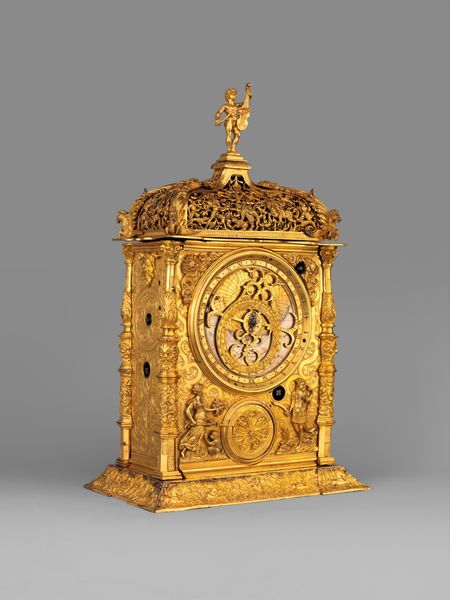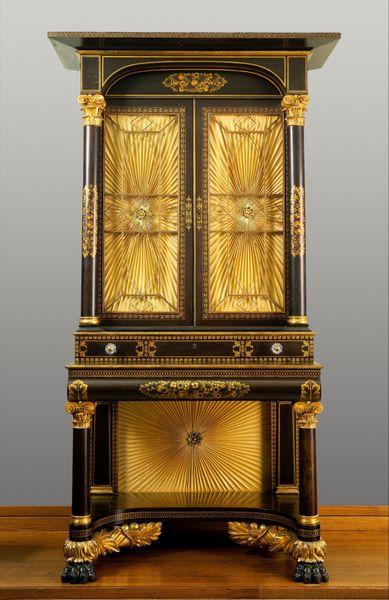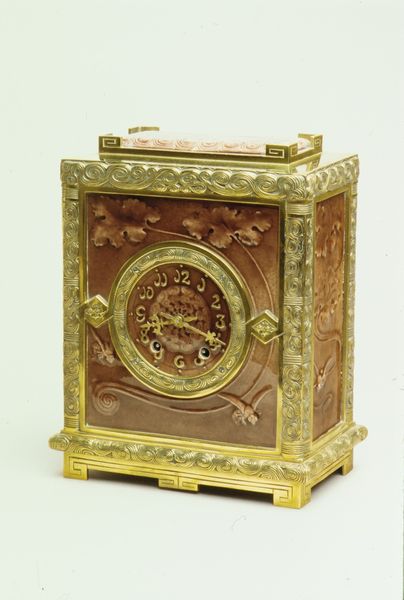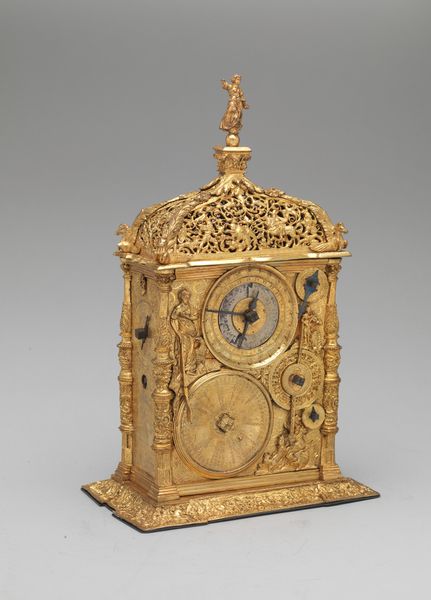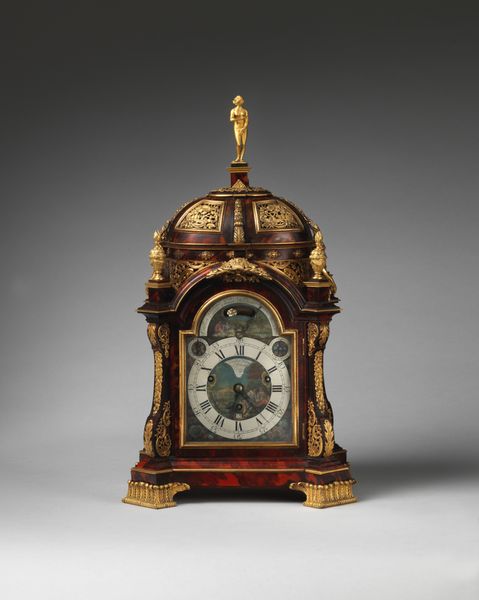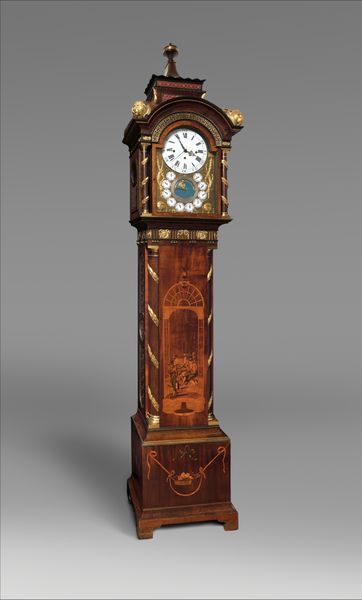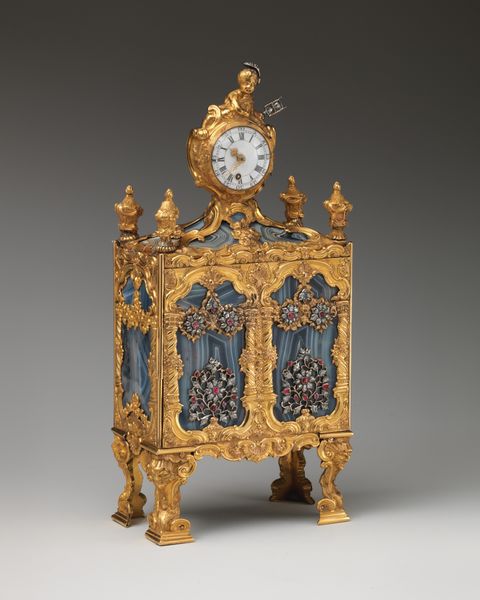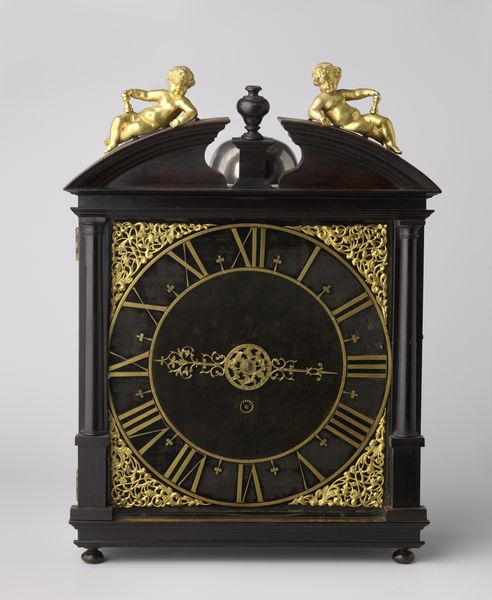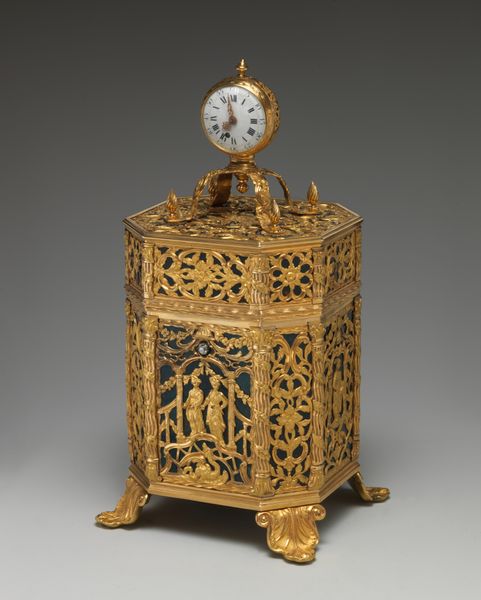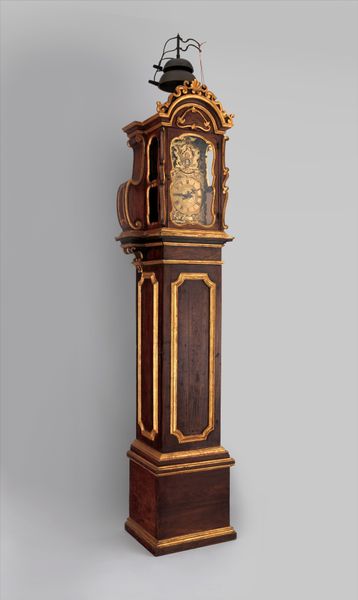
metal, guilding, glass, wood
#
baroque
#
metal
#
furniture
#
guilding
#
glass
#
france
#
wood
#
decorative-art
Dimensions: H. 59.1 cm (23 1/4 in.)
Copyright: Public Domain
Curator: Ah, yes, the Boulle marquetry is truly dazzling! The Art Institute of Chicago holds this remarkable Table Clock, crafted around 1675 by André Charles Boulle. Its materials range from wood and metal to gilding and glass. Editor: My word, it practically screams opulence, doesn't it? All that gold leaf catches the light beautifully, although there is something about the face, maybe the numerals, that feels busy to the point of being overwhelming. Curator: Well, the piece embodies the Baroque style. It represents much more than just a clock; it's a symbol of status and power, indicative of the aristocratic tastes of the era. Notice how the French court influenced artistic production. Boulle was known for being a cabinet maker to Louis XIV, you know. Editor: So, beyond telling time, this was about broadcasting wealth and perhaps cultivating an image of cultivated refinement, correct? I imagine this clock sitting in a room for everyone to view. Curator: Precisely. The Clock represents a convergence of wealth, culture and royal power. Furthermore, we might interpret the ornamentation structurally. The intricate inlays are not merely decorative; they're a carefully constructed system of visual signs and motifs. How they integrate as one object gives it, meaning beyond mere function. Editor: That’s fascinating! You have shifted the focus now from the social elite and the external world of aristocratic society and towards the artistic and structural interior, its artistic techniques and materials. It also demonstrates how visual richness might also obscure something, which reminds me of similar critical responses that modern museums often came under at the end of the 20th century. Curator: Absolutely. These historical artifacts continue to generate questions about social contexts and art historical analysis. It offers a reflection, I think, of artistic style during times gone past. Editor: Yes, it prompts such thought. I think for me the golden color still overwhelms anything subtle in terms of message; but its status remains an engaging puzzle piece.
Comments
No comments
Be the first to comment and join the conversation on the ultimate creative platform.
